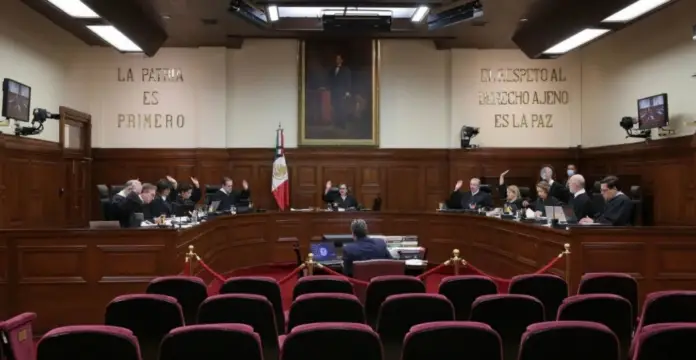
EFE.- The reform to elect the Judicial Branch by popular vote proposed by President Andrés Manuel López Obrador has caused uncertainty in the markets and civil society, but it is a fact that it will be promoted after the victory of the official presidential candidate, Claudia Sheinbaum, in the elections.
These are the keys to the project that generates controversy in public opinion and that may be approved as of September 1, when the alliance of ruling party parties will likely recover the two-thirds majority of Congress to reform the Constitution.
- Popular election of judges
The proposal proposes the election by popular vote of the members of the Supreme Court of Justice of the Nation (SCJN), the Electoral Tribunal of the Judicial Branch of the Federation (TEPFJ), a new Judicial Disciplinary Tribunal and, in general, all district judges and circuit magistrates in the country.
In total, 1,688 positions would be put to a vote, of which 21 would be at the national level and the rest would be divided by states.
- Changes in the Supreme Court
The Supreme Court is the highest constitutional court and highest jurisdictional authority of the Judicial Branch in Mexico.
The proposal foresees a reduction in the number of ministers of the SCJN, who would become nine instead of the current 11 and whose position would be maintained for 12 years, three less than at present.
Visit: Ken Salazar affirms that Mexico must seek to have a strengthened Judicial Branch: “We cannot impose”
It would also eliminate the two chambers that currently operate and the Court would only meet in full session.
To be eligible for the position it would be necessary to be over 35 years old, have a decade of seniority as a lawyer and not have held positions the year prior to their election.
There would be no possibility of a life pension in case of retirement, as now, and the remuneration of the members of the Court can never exceed that of the head of the Executive.
- Electoral Court
The Electoral Court of the Federal Judicial Branch is the highest jurisdictional authority in electoral matters, and is responsible for resolving disputes related to elections, such as the recent challenges to the June 2 election made by the opposition.
It is divided into two levels: the Superior Chamber and regional chambers, and with the government’s proposal, both would maintain their current number of judges, 7 and 18 respectively, but their mandate would be reduced from the nine years they have at present to six.
- A new Judicial Disciplinary Court
This is another novelty, as it would replace the Federal Judicial Council, the administrative and internal oversight body of the Judicial Branch.
It could receive complaints from any person or authority, and investigate ministers, magistrates, judges and judicial personnel for acts contrary to the law.
The CJF would go from seven members to only five, of which the Executive would appoint one, the Senate another and the rest the SCJN, with a period of six years each.
- Elections by state
In Mexico City alone, 339 positions would be up for election, 114 judges and 225 magistrates, and there could be up to 2,034 candidates, since each power, Executive, Legislative and Judicial, could name up to two candidates per position.
A similar situation would occur in the main states of the country.
In the State of Mexico there would be 114 positions with up to 684 candidates, Jalisco would have 122 positions to be elected with up to 732 candidates, and in Nuevo León a total of 72 positions with up to 432 candidates.
- López Obrador and Sheinbaum, at different speeds
López Obrador, who leaves office on October 1, has reaffirmed that he wants to accelerate the approval of the reform once his alliance of parties has the qualified majority, of two thirds of Congress, necessary to modify the Constitution, on September 1, without negotiating with the opposition.
Her statements contrast with those of Sheinbaum, who on Monday said in a press conference that she agreed in her meeting with the president to have a “very broad discussion” throughout the country about the reform that would involve bar associations, law schools, workers of the Judicial Branch and current judges. The outgoing president said in a morning press conference that there has already been enough discussion.
Source: latinus.us







